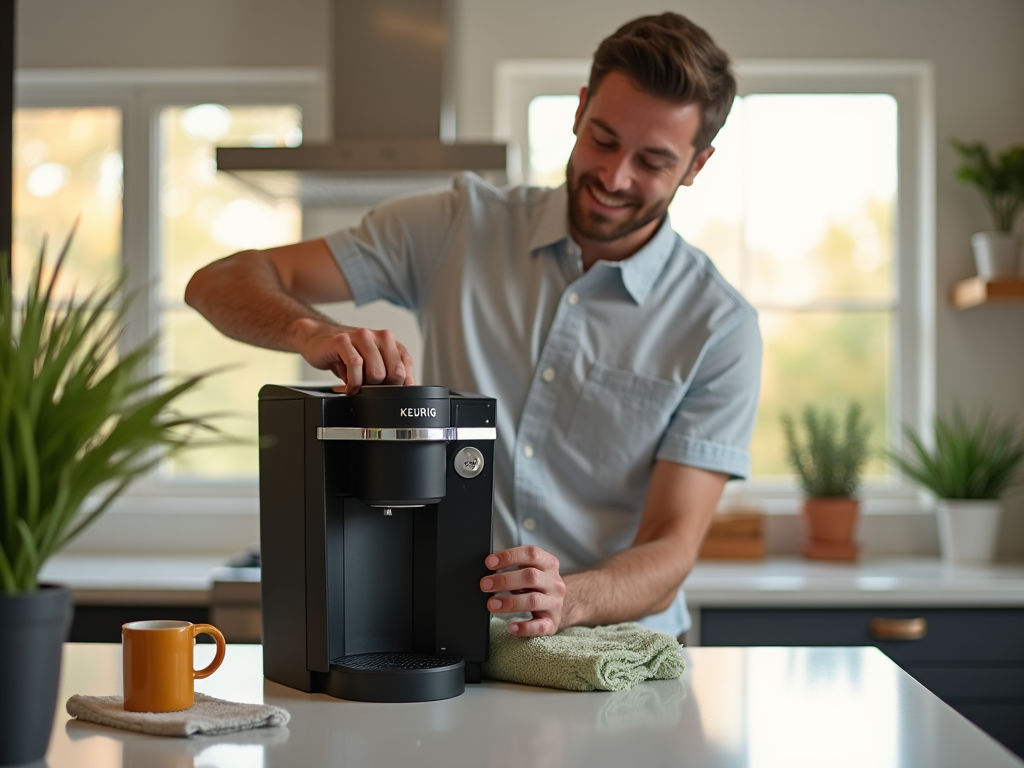Keeping your Keurig coffee maker clean is essential for ensuring that each cup of coffee tastes fresh and the machine operates efficiently. Regular cleaning not only prolongs the life of your Keurig but also prevents the build-up of harmful bacteria and mold. In this article, you will learn a step-by-step guide on how to clean a Keurig coffee maker properly, using accessible household materials and simple techniques.
Why Regular Cleaning is Important

Regular cleaning of your Keurig ensures consistent performance and high-quality brew. With time, calcium deposits from water and coffee residues can build up within the machine’s internal components. These deposits can lead to blocked lines, reduced brewing efficiency, and unpleasant tastes. Furthermore, regular maintenance reduces the risk of mold and bacteria developing in warm, moist areas of the machine. By incorporating cleaning into your routine, you are investing in the long-term health and functionality of your coffee maker.
Materials You Will Need
Before starting the cleaning process for your Keurig coffee maker, gather the necessary materials. Prepare the following items:
- Distilled white vinegar or Keurig descaling solution
- Water
- A clean, dry cloth
- Mild dish soap
- A toothbrush or bottle brush
Using these materials, you will be equipped to effectively clean the exterior and interior components of your Keurig machine, ensuring it is free from dirt and buildup.
Now that you are ready, follow these steps to thoroughly clean your Keurig:
- Unplug and Disassemble: Start by unplugging your machine and removing any removable parts, such as the drip tray and water reservoir.
- Clean the Exterior: Use a damp cloth with mild dish soap to wipe down the exterior of the machine and the removable parts.
- Descale the Machine: Fill the water reservoir with a mixture of equal parts water and distilled white vinegar (or use a descaling solution). Run the brew cycle several times, without adding a coffee pod, until the reservoir is empty.
- Run a Rinse Cycle: Fill the reservoir with fresh water and run the brew cycle again to remove any vinegar residue.
- Clean the Needle and Surfaces: Use a toothbrush or bottle brush to gently clean around the pod holder and the interior needle.
Following these steps will ensure your Keurig is hygienic, descaled, and capable of brewing a great cup of coffee every time. Make sure to follow these steps at least every three to six months for optimal performance.
Maintaining Your Keurig
Keeping your Keurig in top condition involves more than just occasional deep cleaning. Implementing weekly maintenance routines can help maintain cleanliness and performance. Regular tasks include wiping down the exterior and cleaning the drip tray and pod holder with a damp cloth. Avoid letting water sit too long in the reservoir to reduce mineral buildup. Additionally, inspect the machine’s components for wear and replace them as needed. Establishing a routine will ensure your Keurig remains a reliable part of your kitchen setup.
Conclusion
Cleaning your Keurig coffee maker is not only about ensuring great coffee flavors but also about maintaining the appliance’s efficiency and longevity. Regularly following the outlined cleaning steps and maintaining a solid routine will help prevent the common issues associated with lack of care, such as clogs or unwanted tastes. By investing a little effort into these maintenance practices, you can provide a better coffee experience every day and prolong the life of your beloved Keurig.
Frequently Asked Questions
- How often should I clean my Keurig coffee maker? It is recommended to clean the exterior components weekly and perform a full descale and deep clean every three to six months.
- Can I use something other than vinegar for descaling? Yes, you can use a commercial descaling solution specifically designed for coffee makers, or citric acid as an alternative to vinegar.
- Why does my Keurig coffee taste bad after cleaning? If there is a vinegar taste, run additional rinse cycles with fresh water to remove any lingering residue.
- What type of water should I use to fill my Keurig? Using filtered water can reduce mineral build-up and improve the taste of your coffee.
- Can I put the removable parts in the dishwasher? Check the manufacturer’s instructions, but generally, most removable parts can be cleaned in the top rack of a dishwasher.
